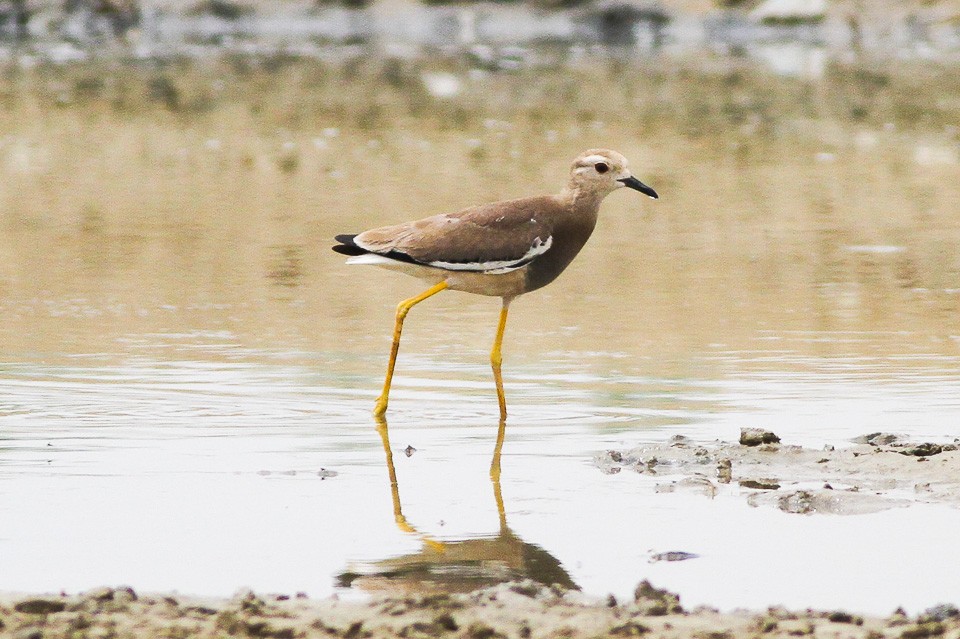White-tailed Lapwing
A species of Lapwings Scientific name : Vanellus leucurus Genus : Lapwings
White-tailed Lapwing, A species of Lapwings
Botanical name: Vanellus leucurus
Genus: Lapwings
Content
Description General Info
Description
The white-tailed lapwing or white-tailed plover (Vanellus leucurus) is a wader in the lapwing genus. The genus name Vanellus is Medieval Latin for a lapwing and derives from vannus a winnowing fan. The specific leucurus is from Ancient Greek leukouros, "white-tailed". This medium-sized lapwing is long-legged and fairly long-billed. It is the only lapwing likely to be seen in other than very shallow water, where it picks insects and other small prey mainly from the surface. Adults are slim erect birds with a brown back and foreneck, paler face and grey breast. Its long yellow legs, pure white tail and distinctive brown, white and black wings make this species unmistakable. Young birds have a scaly back, and may show some brown in the tail. The breeding season call is a peewit, similar to northern lapwing. It breeds semi-colonially on inland marshes in Iraq, Iran and southern Russia. Four eggs are laid in a ground nest. The Iraqi and Iranian breeders are mainly residents, but Russian birds migrate south in winter to the Indian Subcontinent, the Middle East and north east Africa. It is a very rare vagrant in western Europe, the first example in Britain being found at Packington, Warwickshire on 12 July 1975. In some parts of its distribution range the species faces threats related to habitat destruction and unintentional poaching. The white-tailed lapwing is one of the species to which the Agreement on the Conservation of African-Eurasian Migratory Waterbirds (AEWA) applies. 
Size
29 cm
Nest Placement
Ground
Feeding Habits
White-tailed Lapwing predominantly consumes insects like beetles, grasshoppers, caterpillars, and fly larvae, supplemented by worms, molluscs, and crustaceans. It forages on land and foot-dabbles in shallow waters, occasionally probing mud or submerging its head while wading deeper, maintaining diurnal feeding activity.
Habitat
The habitat of white-tailed Lapwing typically includes shores of lakes and river valleys, closely associated with shallow standing or slow-flowing waters conducive to wading. Preferred environments consist of marshy meadows, both flooded and drying, as well as terrain featuring salt-tolerant shrubbery. For breeding, white-tailed Lapwing selects damp areas with vegetation, be they near saline or freshwater bodies, including swampy brackish lake shores and vegetated islets.
Dite type
Insectivorous
General Info
Feeding Habits
Bird food type
Species Status
Not globally threatened.
Scientific Classification
Phylum
Chordates Class
Birds Order
Shorebirds Family
Plovers Genus
Lapwings Species
White-tailed Lapwing 